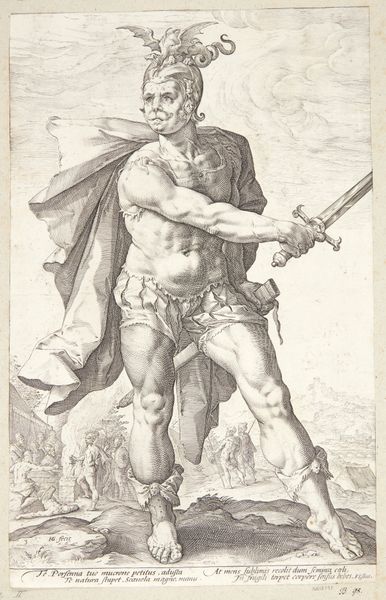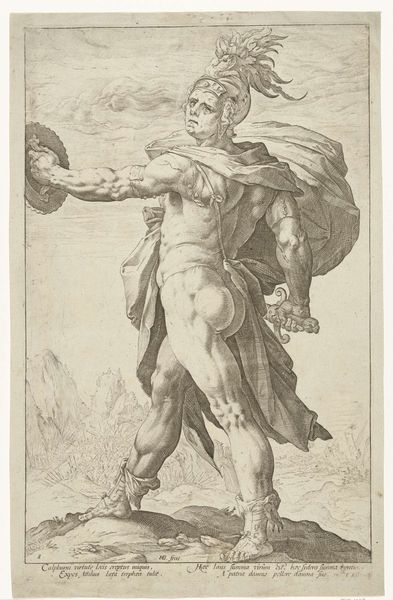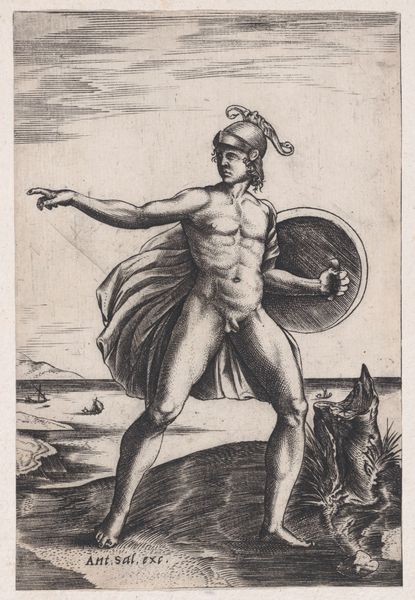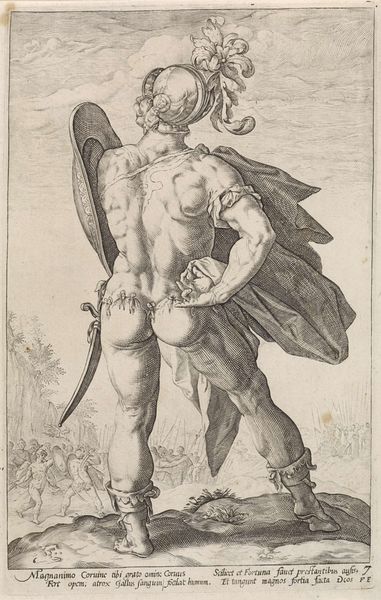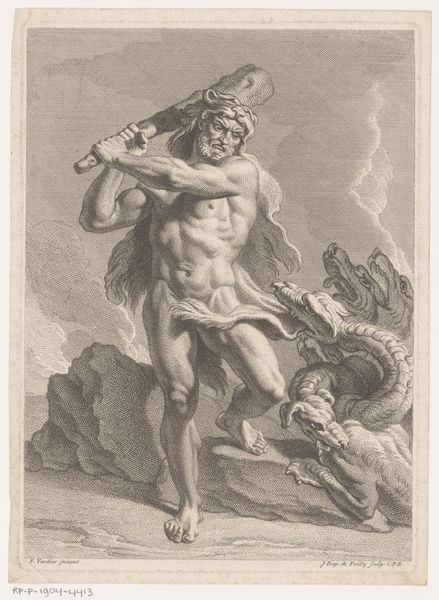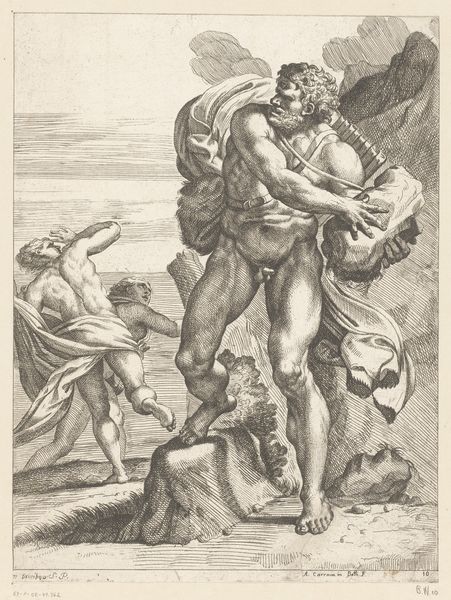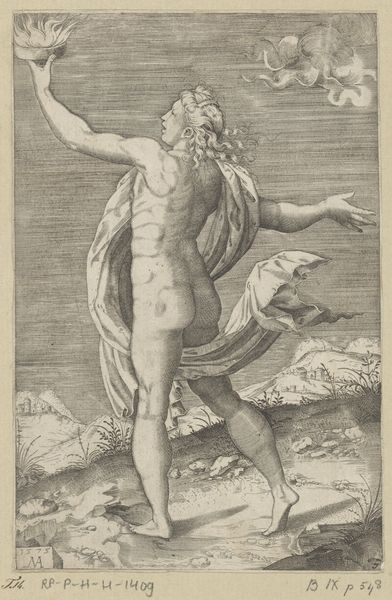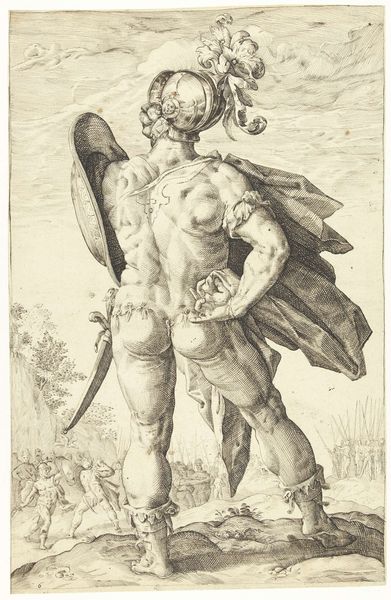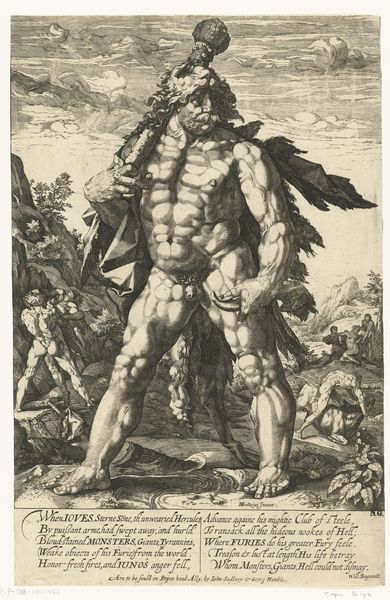
drawing, print, engraving
#
portrait
#
drawing
# print
#
pencil sketch
#
mannerism
#
figuration
#
form
#
line
#
history-painting
#
nude
#
engraving
Dimensions: 14 7/16 x 9 3/16 in. (36.6 x 23.4 cm)
Copyright: Public Domain
Curator: Wow, the figure really jumps out at you, doesn't it? Enormous and overflowing with this idealized virility. Editor: Absolutely, the almost cartoonish musculature definitely grabs attention. This engraving, "Calphurnius, from The Roman Heroes," was crafted in 1586 by Hendrick Goltzius. What can you tell us about this print’s historical context? Curator: Well, it comes at a time when the Dutch Republic was actively constructing its own national identity. Antiquity, particularly Roman history, served as a vital source of inspiration for its burgeoning sense of civic virtue and military prowess. Editor: And Goltzius leans heavily into this heroism through Calphurnius’ exaggerated physique and posture, echoing the era’s fascination with idealized forms, especially in Mannerism. Curator: Precisely. The nudity, the flamboyant helmet, and the almost performative contrapposto all serve to emphasize the figure's might and command, aligning Calphurnius with archetypal images of Roman military strength and valor. Editor: I notice, though, the rather grim expression on Calphurnius’s face and the battlefield in the distance; there's a suggestion that the glory comes at a cost. Do you think there is a warning in here? Curator: It’s possible. However, this print likely functioned within a culture of princely patronage and competitive print markets. Images of powerful men – even those drawn from the distant past – provided examples and bolstered the prestige of the present rulers and patrons. We might be projecting our present-day sensitivities onto the work if we over-emphasize any negative elements. Editor: Good point. Yet the symbolism isn't always straightforward, is it? These images held various meanings for different audiences. Goltzius has presented an impressive specimen. I find the use of the line here creates volume and texture, the artist is surely at the peak of their game. Curator: Yes, it's fascinating how the visual vocabulary of power and virtue circulates and gets reshaped to fit contemporary agendas. Editor: Looking closer, I noticed details in his expression that reveal the complexity of Goltzius' ability to project not only power, but also vulnerability, within his portrayal. Curator: Yes, indeed. The study of historical contexts helps us better understand the ways in which historical ideas persist through image, allowing art such as this to become much more relevant in contemporary discourse.
Comments
No comments
Be the first to comment and join the conversation on the ultimate creative platform.

